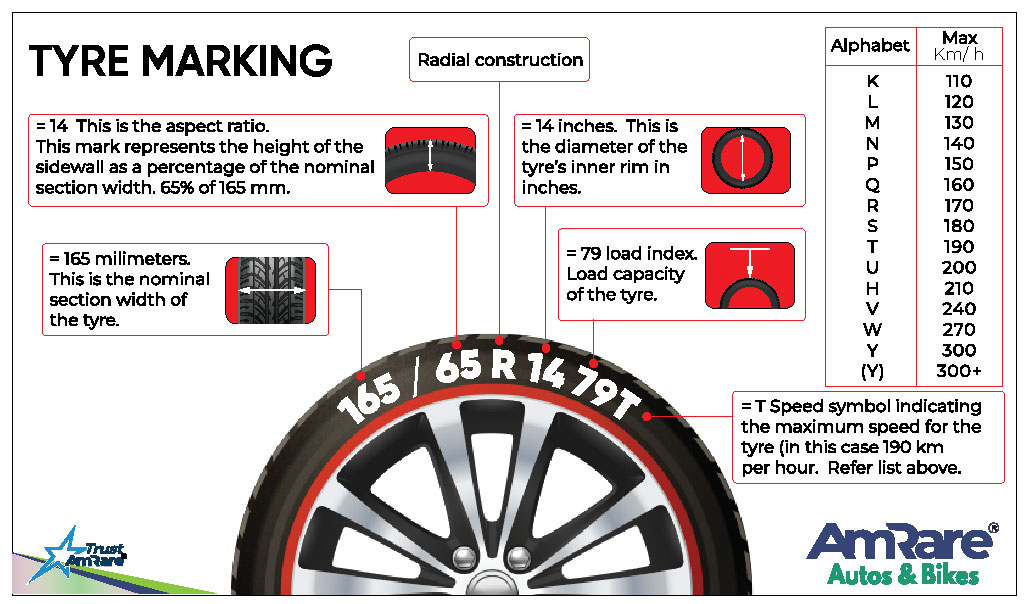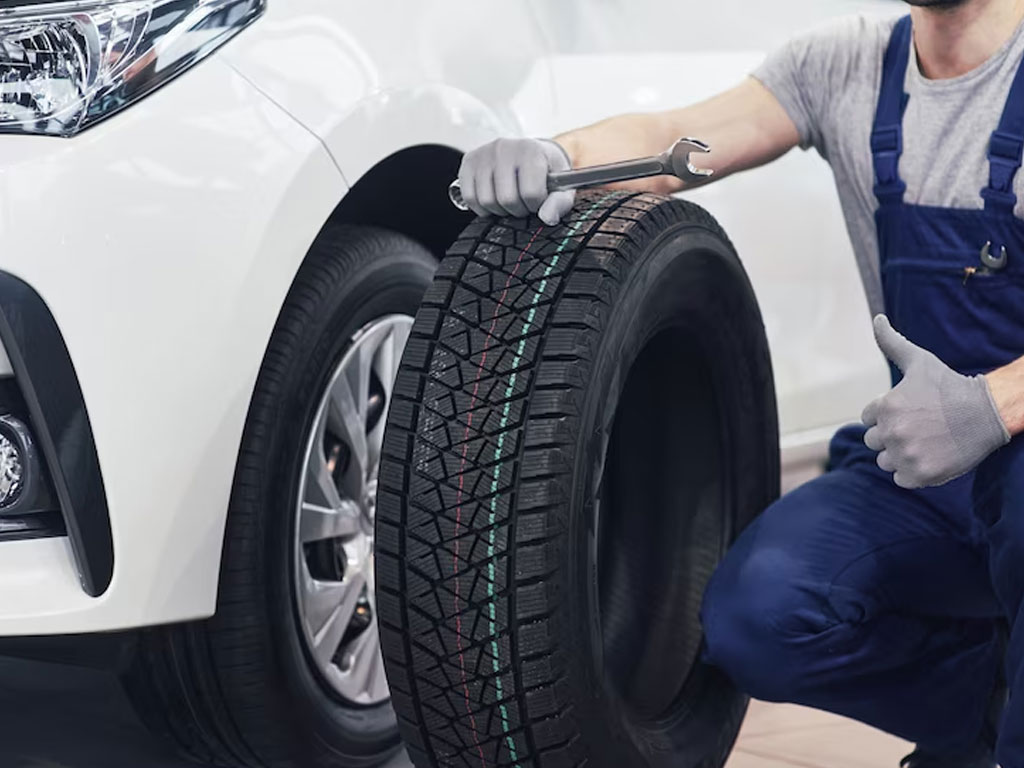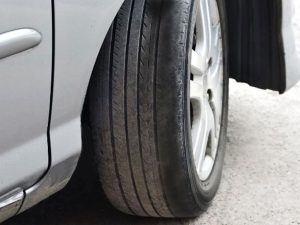Pay particular attention to the following factors when selecting tyres:
1. Width of the tyre
The width is indicated by the first three numerals on the tyre. A 165/65/R14 tyre, for instance, has a 165 mm width. Noise and grip are impacted by tyre width. Wider tyres are louder but offer more traction.
2. Thickness of the tyre profile
The profile (or thickness) of the tyre is the following aspect that affects width. This represents the sidewall thickness as a proportion of tyre width.
For instance, the designation 165/65/R14 denotes a profile of 65, or roughly 65% of 165mm.
Lower profiles are seen to be more attractive and offer greater steering response, whereas higher profiles (above 50) typically offer more comfort and durability.
3. Size of tyres
The correct tyre size for your car is crucial for safety. The size is identified as the number R14, which stands for 14 inches, under the label 165/65/R14.
The performance of systems like ABS and ESC, as well as TPMS and speedometer readings, will be impacted by using the incorrect tyre size.
4. Assess the marking

The final letter on the tyre label represents the speed rating, also known as speed value. In the case of 165/65/R14/T, T denotes the speed rating. Referring to the speed level on the chart, a higher grade indicates greater grip and braking power at higher speeds.
Speed graph:
K = 110 km/h L = 120 km/h M = 130 km/h N = 140 km/h P = 150 km/h Q = 160 km/h R = 170 km/h S = 180 km/h T = 190 km/h U = 200 km/h H = 210 km/h V = 240 km/h W = 270 km/h Y = 300 km/h (Y): Over 300 km/h
5. Tread pattern on tyres

Asymmetrical, symmetrical in direction, and directed patterns are the three types.
The most typical design is symmetrical; while it is great for peacefulness, wet roads are not the best place for it.
You need directional tyres—V-shaped treads made to turn only one way—for the best performance on wet surfaces. This pattern’s broader shape improves water deflection to the sides and increases grip. But this tyre makes more noise than a symmetrical tyre.
Asymmetrical tyres may perform both tasks; the pattern is split in half to reduce noise on wet surfaces and the other half to reduce it on dry terrain. Asymmetrical tyres typically cost more money.
6. Tyre age
Tyres have a lifespan; unused and stored tyres can also degrade and become hazardous to use.
The four-digit identifier on the sidewall of the tyre displays the tyre’s production date. For instance, 3220 indicates that it was produced during the 32nd. week of 2020.
Discounts are possible, but older tyres are typically less expensive. Tyres older than six years should not be used for safety reasons.
7. Factory warranty
The warranty or guarantee that tyre manufacturers often provide is relatively constrained. When selecting tyres, consider the warranty that best suits your requirements.

AmRare Autos
There are numerous high-quality recon vehicles in galleries 1 and 2 of AmRare Autos at One City USJ25 that still have their original tyres on their rims. At any time, feel free to visit our gallery.
#amrareautos #trustamrare #reconcars #carimportfromjapan #onecity



